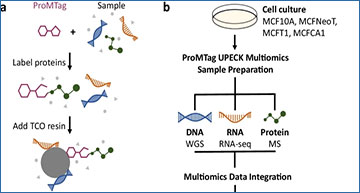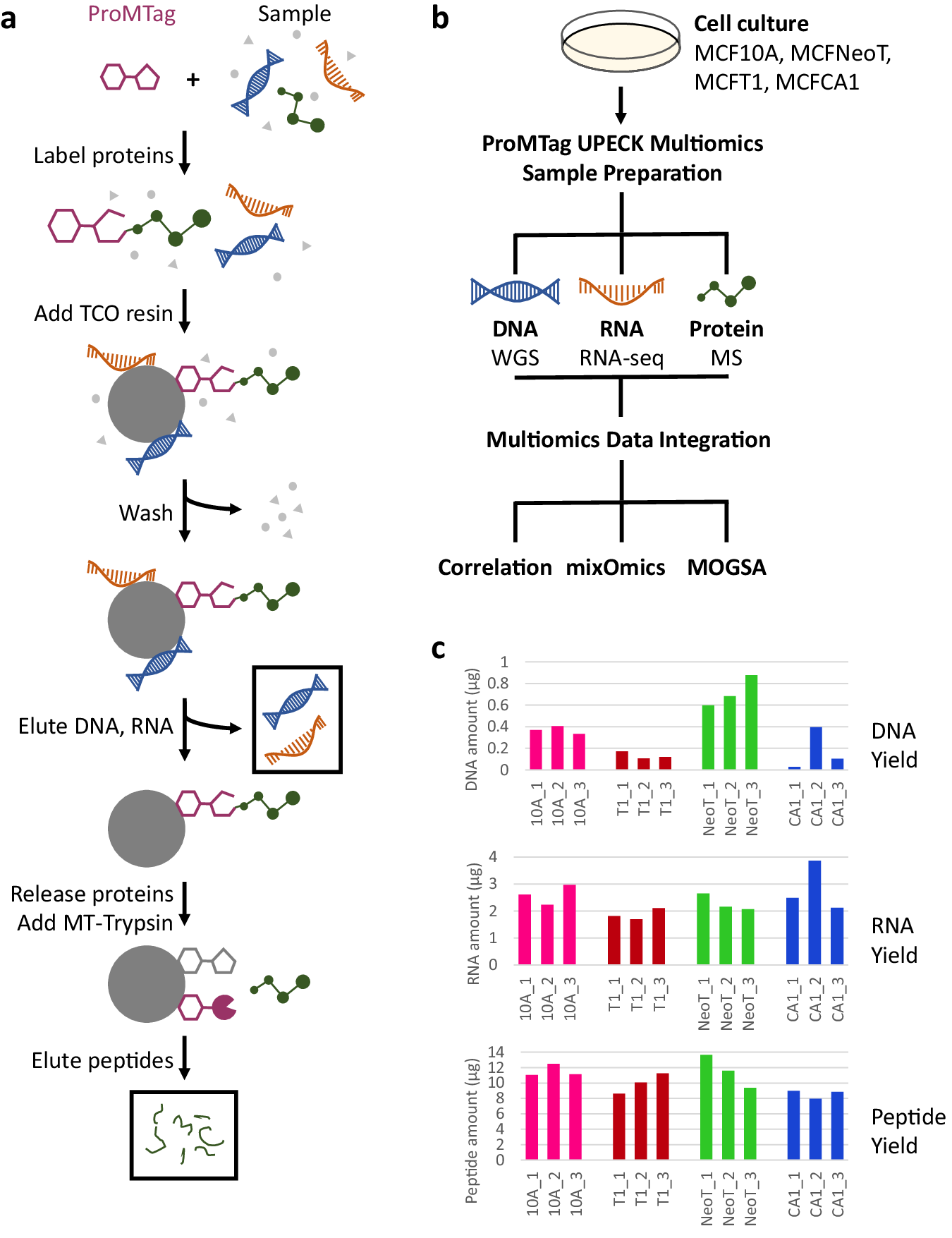Unraveling the complexities of diseases such as cancer often requires a multi-faceted approach, analyzing various molecular components like DNA, RNA, and proteins. However, traditional methods for preparing samples for multiomics studies have been cumbersome, costly, and prone to bias. Researchers at Impact Proteomics have developed a groundbreaking method that addresses these challenges, revolutionizing the way researchers conduct multiomics analyses.
The new method offers a streamlined approach to sample preparation, enabling the extraction of high-quality DNA, RNA, and intact proteins or peptides from a single sample. This innovative technique utilizes a reversible protein tagging scheme to covalently link all proteins in a lysate to a bead-based matrix, facilitating the isolation of proteins while preserving their integrity. Meanwhile, nucleic acids are precipitated and selectively solubilized to obtain separate pools of DNA and RNA.
Preparation of DNA, RNA, and peptides from a single starting sample
via the ProMTag Multiomics workflow
a The ProMTag Multiomics workflow. b TNBC cell lines were put through the ProMTag Multiomics workflow to produce DNA, RNA, and peptides that were analyzed via WGS, RNA-Seq, and mass spectrometry (MS), respectively. For each replicate, we began with a volume of cell lysate that contained 100 µg of protein. c Yields of DNA, RNA, and peptides from each replicate.
To demonstrate the effectiveness of this method, the researchers applied it to compare the genomes, transcriptomes, and proteomes of four triple-negative breast cancer cell lines with varying degrees of malignancy. The results revealed insights into the involvement of both RNA and associated proteins, as well as protein-only dependent pathways that distinguish these cell lines. Additionally, the study showcased the versatility of this multiomics workflow by applying it to tissue analysis, specifically mouse brain, liver, and lung tissue.
This breakthrough in sample preparation has far-reaching implications for biomedical research. By streamlining the process of extracting multiple molecular components from a single sample, researchers can overcome the limitations of traditional methods and gain deeper insights into complex biological systems. The ability to analyze DNA, RNA, and proteins simultaneously opens doors to uncovering intricate molecular mechanisms underlying diseases and identifying potential therapeutic targets.
Moreover, the efficiency and cost-effectiveness of this method offer significant advantages for researchers conducting large-scale multiomics studies. With the ability to obtain comprehensive molecular profiles from a single sample, researchers can accelerate their investigations and uncover novel insights into disease biology.
The development of this novel sample preparation method represents a significant advancement in the field of multiomics research. By providing researchers with a streamlined and efficient approach to analyzing multiple molecular components, this technique holds promise for advancing our understanding of complex diseases and accelerating the development of personalized medicine strategies.
Biedka S, Alkam D, Washam CL, Yablonska S, Storey A, Byrum SD, Minden JS. (2024) One-pot method for preparing DNA, RNA, and protein for multiomics analysis. Commun Biol 7(1):324. [article]





